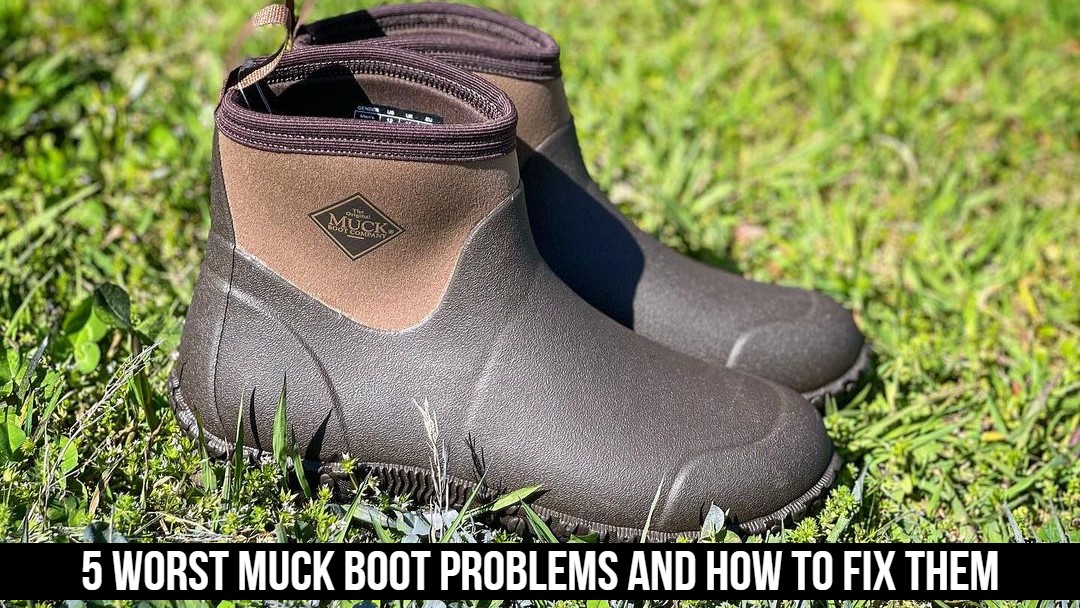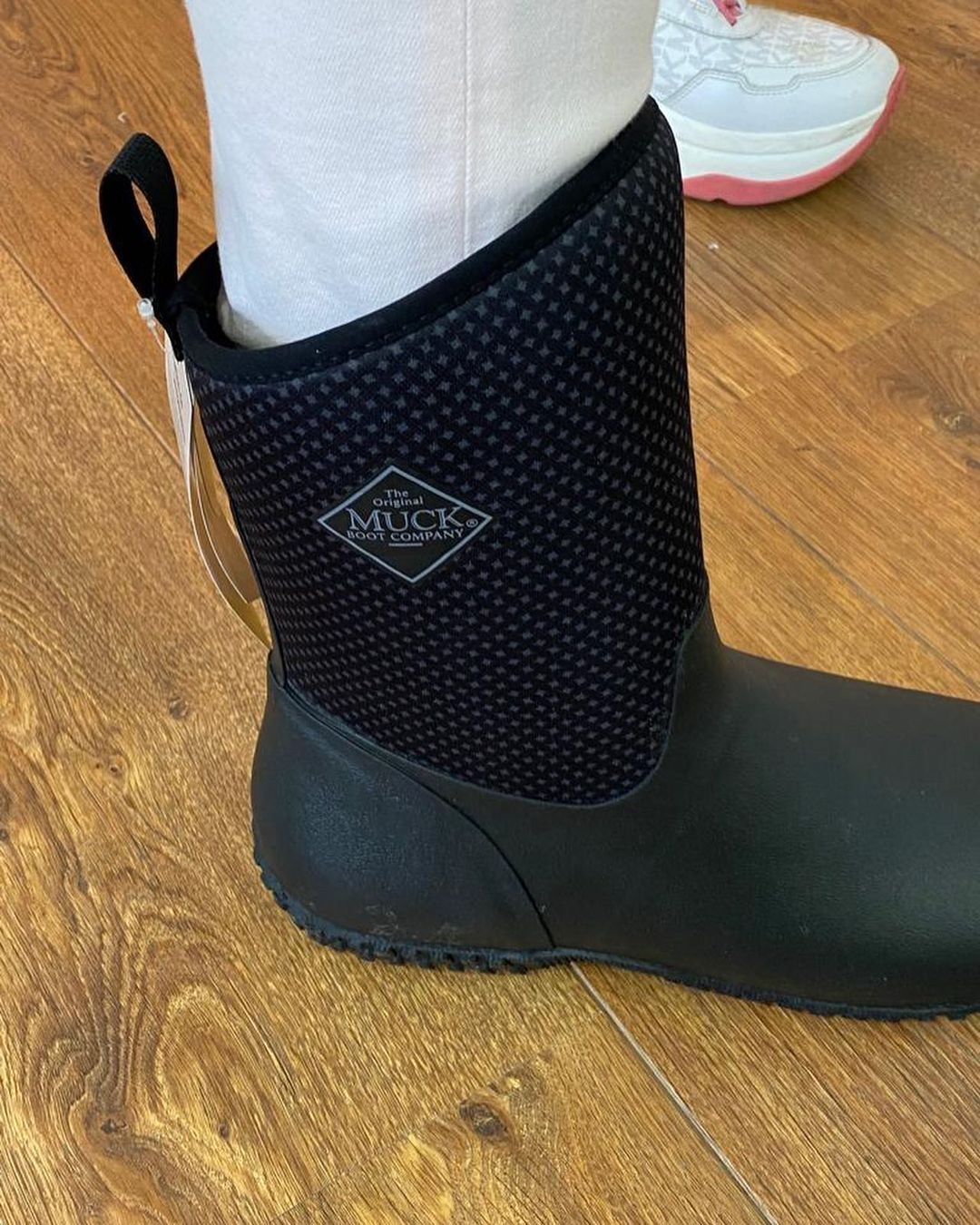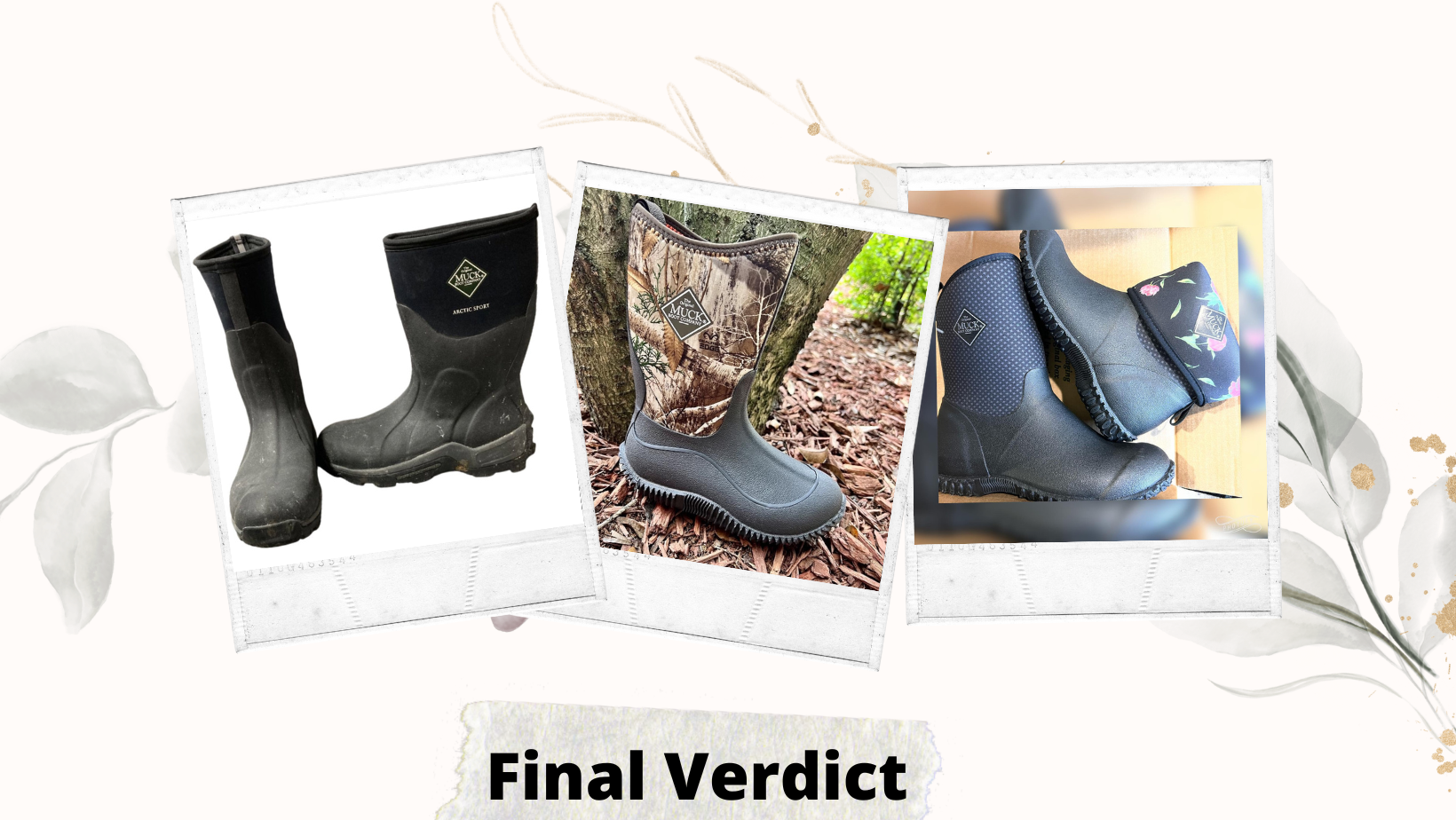Last Updated on August 1, 2024 by Sarah Jaffe

If you’ve ever had a problem with muck boots, you know how irritating they can be. They don’t give you the support and traction you need to stay upright, and they can cause blisters, cuts, and even broken toes.
To help you keep your feet healthy, we’ve compiled a list of the five worst problems with muck boots and their solutions and prevention tips. If you’re having any of these problems, make sure to read our full guide on how to avoid these issues in the future.
Muck Boot Problems And Their Solutions
Following are the five of the most common muck boot issues and ways to prevent them.
1. First Problem: Tearing of muck boot sole
The first problem you may experience with your muck boots is that the sole of the muck boot starts to tear or come apart. The reason for this is that the muck boot’s sole is not as strong as it could be. This is a major issue as it will cause the muck boot sole to lose its grip on the muck, making you slip or fall.
Solution:
To prevent this problem, wear thick, heavy-soled muck boots with a good grip. If you want more protection, use boots that are made from a rubberized material. The thicker the sole of your muck boots, the more comfortable you’ll be wearing them and the less chance of you slipping.
2. Second Problem: Chafing
A second problem you can encounter with your muck boots is chafing. This is when your feet start to get sore because the muck boots aren’t providing enough protection. To help you alleviate the soreness, wear socks or other types of foot coverings that will help reduce the amount of friction between your feet and the muck boots.
Solution:
If you are wearing socks, make sure they are made of a breathable material so your feet don’t get too sweaty. Wool socks are a good option. You can also wear foot powder to help keep your feet dry. If the chafing is severe, you may need to apply a bandage or tape to the area to help protect your skin.
3. Third Problem: Muck boots that are too big
It is also possible that your muck boots are too large. This can cause your feet to slip around inside the boot, which can lead to blisters and many types of foot problems.
Solution:
To prevent this problem, make sure you buy muck boots that fit snugly. If you can’t find a pair of muck boots that fit well, you can try wearing two pairs of socks. The extra pair of socks will help fill up the space in the boot so your feet don’t slip as much.
4. Fourth Problem: Muck boots that are too small
The opposite problem of muck boots that are too big is muck boots that are too small. This can cause your toes to feel cramped and uncomfortable. It can also make it difficult to walk or move around in the boots.
Solution:
There are plenty of ways to stretch out your boots if they’re too small. You can try wearing thicker socks, using a shoe horn, or even using a hair dryer to heat up the boots and make them more pliable. If you can’t get the boots to stretch out, you may need to buy a new pair that fit better.
5. Fifth Problem: Muck boots that leak
The final problem you may have with your muck boots is that they may leak. This can be a major problem if you’re working in wet conditions or if you’re walking through puddles or mud.
Solution:
If your muck boots are leaking, you can try using a waterproofing spray or sealant. You can also try using a waterproof liner inside the boot. As a result, your feet will stay dry and the boots will not leak.
6. Sixth Problem: Problem: Dirt in Boots
When you’re working on the ground in the dirtiest places, it’s hard to avoid getting a little dirt on your boots. And sometimes, you might not want to take them off at the end of the day to wash them out completely.
Solution:
If this is the case, you need to take care of the problem while you still can. A quick way to get rid of dirt from your boots is to use the freezer method.
This means taking off your boots and storing them in the freezer overnight. If you don’t want to do that, you should at least put your boots in a bucket of warm water overnight to help loosen any dirt stuck to them.
It’s also important to take the time to clean your boots at home because once they’re wet, they become a magnet for dirt and bacteria. Once you get back to camp or wherever you’re going, you need to get those muddy boots off.
7. Seventh Problem: Cracking skin of boots
The cracking skin of boots is a real nuisance. As you walk in the forest, especially if you are walking through mud, your feet may get wet and start to get cold.
At first, you may notice that your foot is a bit cold and stiff. But as you walk more, your feet get colder and colder. Eventually, your feet will be so cold that you can’t feel your toes anymore. This can happen to you when you’re in the woods.
Solution:
You can try and find a dry place where you can put your wet boots. You may be able to dry them out inside of your tent. Alternatively, you can put them on the ground outside of your tent where they will be dried out by the sun. If you’re planning on sleeping outside of your tent, try and have a fire going to keep your feet warm.
8. Eighth Problem: Much Boots Got smelly
If you’ve been walking a lot, your boots will likely smell bad. The reason for this is because of all of the sweat that is forming between your toes.
Solution:
When you first put your boots on, make sure to shake them out so that your toes are not touching each other. You can also soak your boots in some soap to help get rid of the smells.
Prevention Tip to Avoid Muck Boot Problems

Muck boot problems can be prevented with a variety of prevention tips. Some of them are mentioned below:
- The first thing to do is clean them. You can wash the boots by hand, but do the following: Air dry the boots. Do not use a dryer. Boots that are dried in a dryer can shrink. Let your feet air out to allow the boots to dry out completely.
- Avoid putting your boots in a closed area like a closet. This can cause the boots to smell bad again. Never store boots in the bathroom. The moisture in the bathroom will only exacerbate your boots’ smell.
- Once you get your boots cleaned, store them away from direct heat. Do not put your boots in direct sunlight because they will dry out. Instead, store them in a cool, dry place.
Final Verdict

When we think of the word “muck”, many think about the muck found at construction sites or other messy jobs. But muck can happen anywhere and even on the nice side of town. It can be mud, dust, dirt, grime, dirt, or even worse. So when you’re mucking, Don’t let these 5 muck boot problems get you down that are mentioned in this guide in mind so you don’t have to take the time to go to the store and buy the right kind of boot.
A good muck boot can make all the difference when you are on your hands and knees. It’s really important to know how to clean and maintain the muck boots before you wear them. If you do not, you may find yourself needing to replace them much sooner than you thought.
We hope that this guide will help you resolve the most common muck boot issues you may encounter in the future. If you have any other queries regarding this article, feel free to share them in the comment section below.

Sarah is the brains behind BootsNerd. Sarah Jaffe is a writer, editor, and boots lover based in Brooklyn, New York. She has done BA (Hons) in Footwear Design from De Montfort University, UK. She loves to write about boots and has a particular interest in vintage and sustainable fashion.